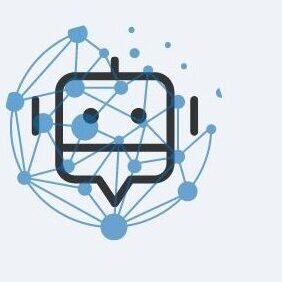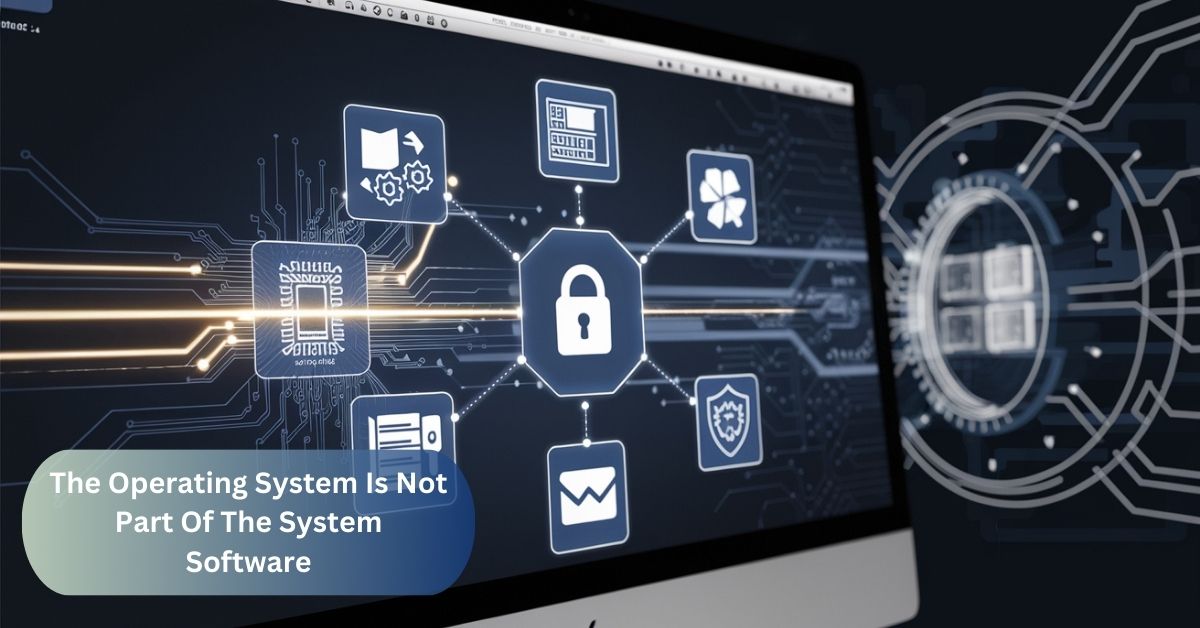From my personal experience, the operating system truly feels like the brain of my computer. It’s what makes everything work together smoothly, letting me use different programs without worrying about what’s happening behind the scenes.
The statement is incorrect because the operating system is essential system software that manages hardware resources and allows other programs to run efficiently.
Introduction To The Operating System Is Not Part Of The System Software.
The phrase “the operating system is not part of the system software.” is a misunderstanding, as the operating system is actually a key part of system software. When someone claims “the operating system is not part of the system software.” it contradicts its role in running essential computer functions. The idea that “the operating system is not part of the system software.” overlooks its responsibility in enabling other programs to function.
Understanding The Role Of The Operating System As System Software
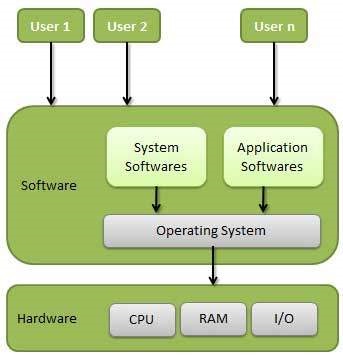
The operating system is an essential part of system software because it manages the computer’s hardware, runs programs, and provides a user interface. It acts as a bridge between the user and the machine, ensuring everything works together smoothly. Without it, other software wouldn’t be able to function properly on the computer.
Continue Reading About System Software
System software serves as the foundation for computer operations, enabling hardware to communicate with applications. It includes various components like operating systems, device drivers, and utility programs, all designed to enhance system functionality.
By managing resources and providing essential services, system software ensures optimal performance and security. Understanding its role helps users appreciate how their devices function effectively.
What Is System Software?
System software is a type of computer program designed to manage and control the hardware and basic functions of a computer. It acts as a foundation for application software, enabling it to run smoothly by coordinating the activities of the hardware components. This software ensures the overall functionality of the computer and helps maintain its performance.
1. Components of System Software:
System software consists of various components that work together to manage computer resources effectively. Key elements include the operating system, device drivers, and utility programs, each playing a crucial role in ensuring smooth operation and user interaction.
2. Utility Programs:
Utility programs are specialized tools that help maintain and optimize a computer’s performance. They perform tasks like file management, system diagnostics, and data backup, ensuring everything runs smoothly and efficiently.
3. Firmware:
Firmware is the essential software coded directly into hardware, allowing devices to execute designated functions. It connects the physical components to more complex software, ensuring seamless and efficient operation.
4. System Utilities:
System utilities are specialized programs that help manage, maintain, and optimize a computer’s performance. They include tools for disk cleanup, file management, and system monitoring, ensuring everything runs smoothly and efficiently.
What Is An Operating System?
1. Key Functions of an Operating System:
- Resource Management: The OS efficiently allocates and manages hardware resources, such as CPU, memory, and storage, ensuring that each program gets the necessary resources to run smoothly without conflict.
- User Interface: It provides a user-friendly interface, whether graphical or command-line, allowing users to interact with the system, launch applications, and manage files easily.
- Process Control: The operating system oversees the creation, scheduling, and termination of processes, maintaining order and maximizing CPU usage to enhance performance and responsiveness.
- File Management: It organizes and controls access to data on storage devices, allowing users to create, read, write, and delete files while ensuring data integrity and security.
- Security and Access Control: The OS implements security measures to protect sensitive information and restrict access to authorized users, safeguarding the system from threats and ensuring user privacy.
2. File System Management:
File system management is a crucial function of an operating system that organizes and controls how data is stored and retrieved on storage devices. It establishes a structured way to create, name, store, and access files, making it easy for users and applications to find and manage their data efficiently.
3. Process Management:
Process management is a core function of an operating system that involves overseeing all the processes running on a computer. This includes creating and terminating processes, scheduling them for execution, and managing their interactions to ensure efficient use of the CPU and resources while maintaining system stability.
4. Security and Access Control:
- User Authentication: Verify identities through passwords, biometrics, or two-factor authentication to ensure that only authorized users can access sensitive information.
- Access Levels: Establish different permissions for users based on their roles, ensuring that individuals can only access the data and functions necessary for their job responsibilities.
- Data Encryption: Protect information by converting it into a secure format that can only be read by those with the appropriate decryption keys, safeguarding it from unauthorized access.
- Activity Monitoring: Continuously track user actions and system changes to detect and respond to potential security breaches or unauthorized access attempts in real-time.
- Regular Updates: Keep software and security protocols up to date to address vulnerabilities and enhance protection against emerging threats, ensuring the system remains resilient against attacks.
Why Is The Operating System Considered System Software?
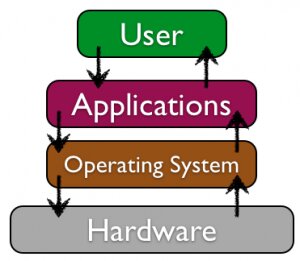
1. Manages Hardware Resources:
The operating system manages hardware resources by controlling how the CPU, memory, and storage are used for different tasks. This coordination ensures that all components work together efficiently, allowing programs to run smoothly without conflicts.
2. Provides a Platform for Applications:
The operating system provides a platform for applications by creating an environment where they can run smoothly and efficiently. It manages the resources needed by these programs, allowing them to perform their tasks without interfering with each other.
3. Facilitates User Interaction:
- User Interface: The operating system offers a graphical user interface (GUI) or command-line interface (CLI), making it easy for users to navigate and interact with the computer.
- Input and Output Management: It processes user inputs from devices like keyboards and mice and displays output on screens, allowing for effective communication between the user and the computer.
- File Management: The operating system organizes and manages files, enabling users to easily create, edit, and access their data without confusion.
How The Operating System Differs From Application Software
1. Purpose and Function:
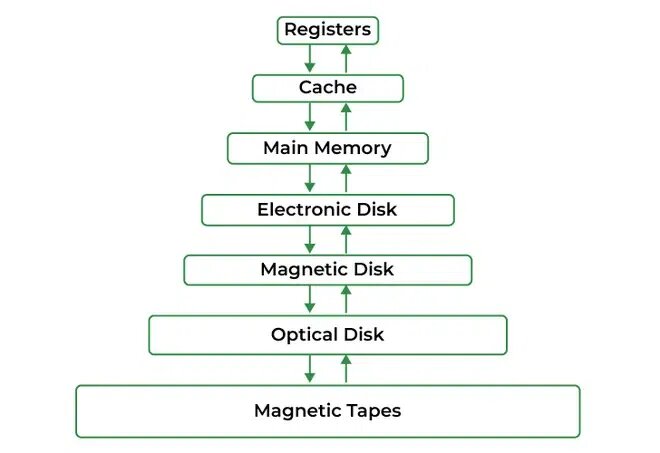
The operating system’s purpose is to manage the computer’s hardware and create a stable environment for other software to run. In contrast, application software focuses on performing specific tasks for users, such as editing photos or browsing the web.
2. Resource Management:
The operating system handles resource management by allocating memory, processing power, and storage space to various applications, ensuring they run efficiently without interfering with each other.
3. User Interaction:
- Graphical User Interface (GUI): The operating system often features a visually appealing interface with icons and windows, making it easy for users to navigate and access programs.
- Command-Line Interface (CLI): Some operating systems provide a text-based interface where users can enter commands, offering a more direct way to interact with the system for advanced users.
- Input Handling: The operating system processes inputs from devices like keyboards and mice, translating user actions into commands that the computer can understand and execute.
- Feedback and Output: It displays information back to users through screens or notifications, allowing them to see results and make informed decisions about their next actions.
Why The Distinction Matters
1. Troubleshooting:
Troubleshooting involves identifying and resolving issues that disrupt normal operation, helping to restore functionality. It requires a systematic approach, analyzing symptoms, and applying solutions to get systems back on track.
2. Upgrades and Maintenance:
Upgrades and maintenance keep your system running smoothly by enhancing performance and fixing issues. Regular updates ensure your software remains secure and compatible with new technologies, extending the life of your devices.
Real-World Examples Of Operating Systems
Real-world examples of operating systems showcase the variety of platforms available for different devices and user needs. Each operating system is designed with specific features and functionalities that cater to various user requirements, whether for personal computers, mobile devices, or servers.
1. Examples of Operating Systems:
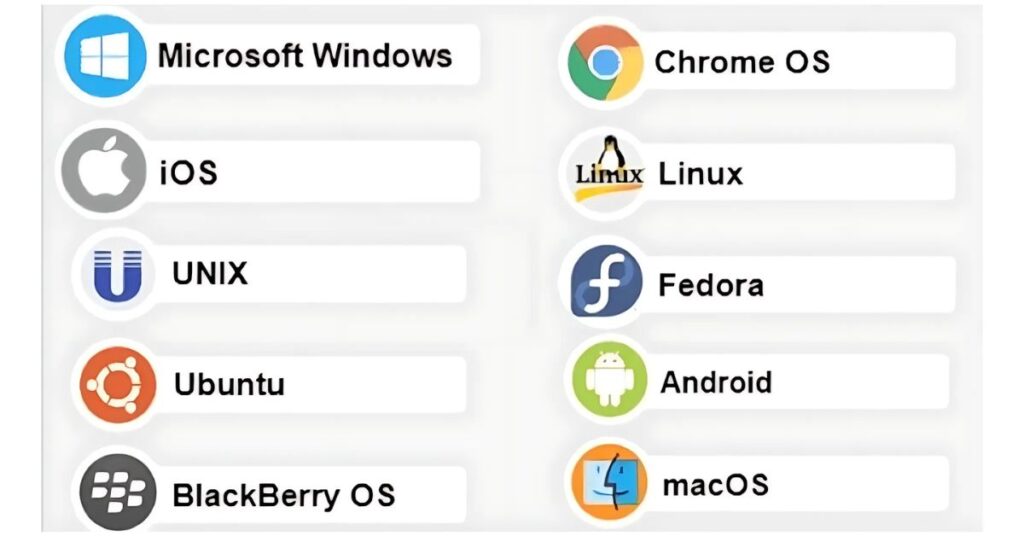
- Windows: A widely used operating system for personal and business computers, known for its user-friendly interface and extensive software compatibility.
- macOS: The operating system for Apple’s Mac computers, offering a sleek design and seamless integration with other Apple products.
- Linux: An open-source operating system that comes in many distributions, known for its flexibility, security, and community support.
- Android: A mobile operating system based on Linux, used by many smartphones and tablets, offering a vast range of applications through the Google Play Store.
- iOS: Apple’s mobile operating system for iPhones and iPads, known for its smooth performance and strong security features.
- Unix: A powerful operating system used primarily in servers and workstations, recognized for its stability and multitasking capabilities.
FAQ’s
1. What is the role of drivers in an operating system?
Drivers are specific programs within the operating system that allow it to communicate with hardware devices, such as printers, graphics cards, and keyboards.
2. Can an operating system crash?
Yes, an operating system can crash due to software bugs, hardware failures, or conflicts, which may require a restart or troubleshooting to resolve.
3. What is a kernel?
The kernel is the core part of the operating system that manages system resources, processes, and communication between hardware and software.
4. How often should I update my operating system?
It’s a good practice to update your operating system regularly to ensure you have the latest security features, bug fixes, and improvements.
5. What is a mobile operating system?
A mobile operating system is designed specifically for smartphones and tablets, providing features optimized for touch screens and mobile applications, such as Android and iOS.
Conclusion:
The operating system is an essential component of system software. It manages the computer’s hardware, allows users to interact with the system, and provides a platform for applications to run effectively. Understanding its role is vital for grasping how computers function.
